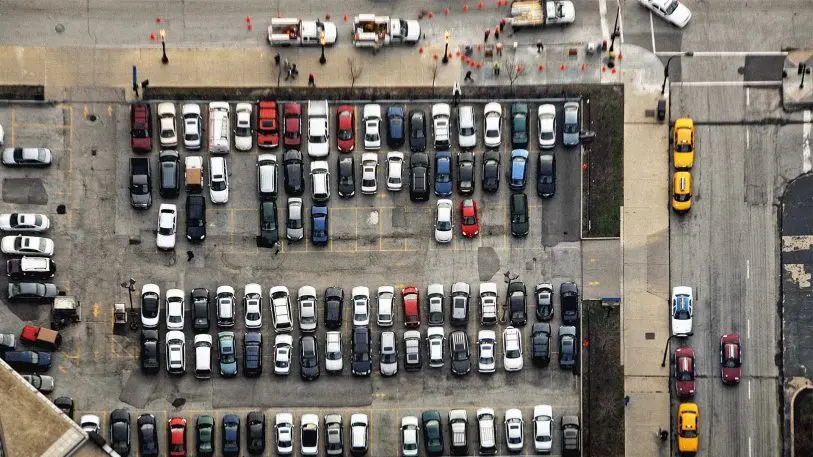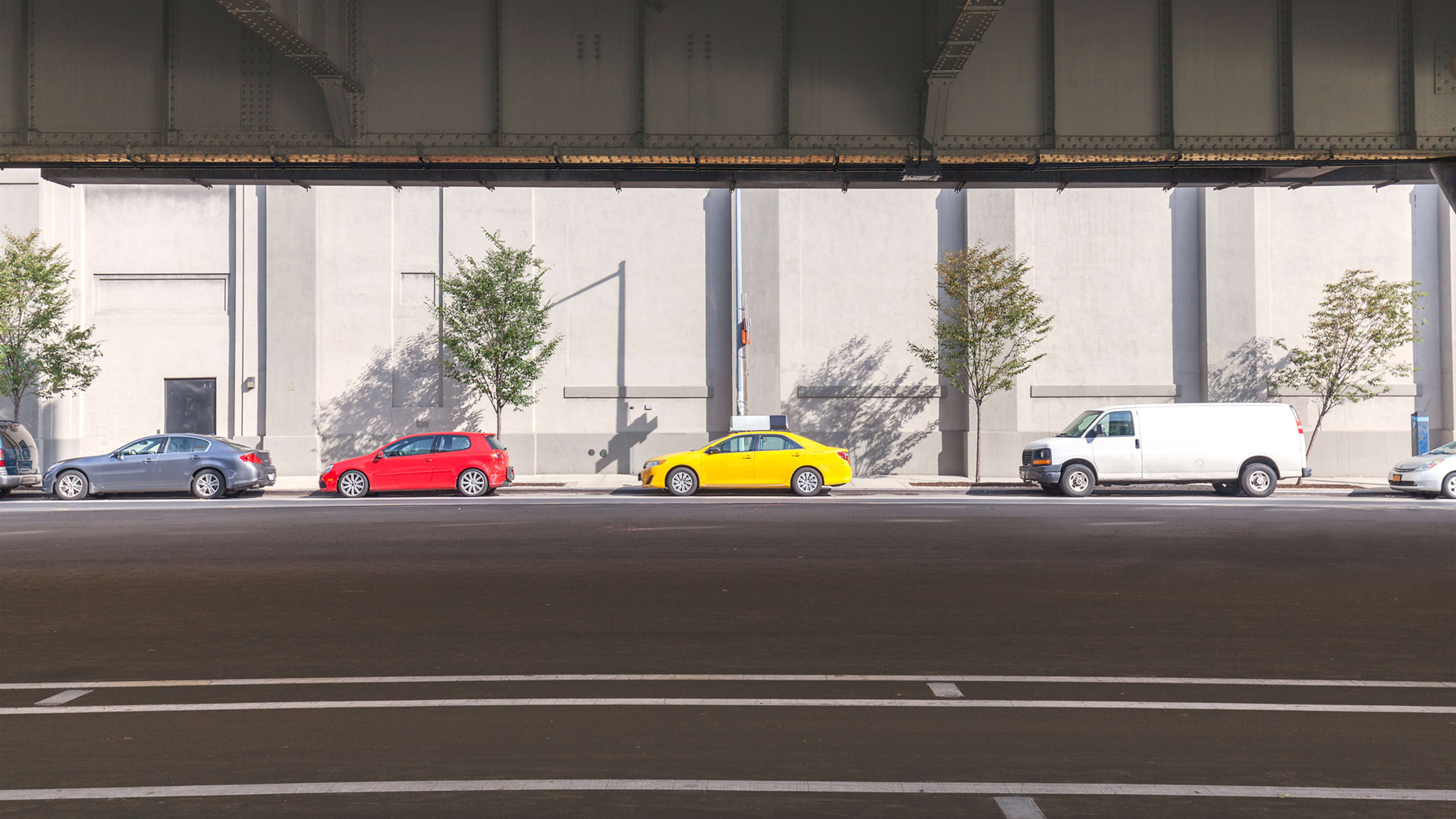I’m sitting in the passenger seat of a white Tesla Model S, cruising around downtown Detroit at rush hour. We need to find a parking spot, but rather than look out the window for one, we’re letting the car conduct its own search.
As we drive along, a screen in the car scrolls through a real-time map of all the available curbside parking near us, revealing the length and width of each vacant parking spot. We sidle up to an opening on the street that measures a couple dozen feet wide and nearly six feet deep, more than adequate for the Tesla. The screen also tells us that the space lies parallel, not crosswise, to the car, is 700 feet from our destination, and costs a couple of dollars to occupy. Icons on the screen assign a degree of confidence to the data’s accuracy, in red, yellow, or green. This one is half green and half yellow.
That’s much more telling than the usual method for sizing up a parking spot: eyeballing. The software we’re using, from industrial tech giant Bosch, calls upon the internet of things to address one of the most significant pain points of city life: finding a parking spot. Some new cars, like the Model S, already come rigged with a dozen ultrasonic sensors that compose the advance parking assistance systems that help drivers exit or wiggle into challenging parking spots.

Bosch’s system assigns those same on-board sensors, which use ultrasonic soundwaves to read their surroundings, the additional task of collecting information about on-street parking spots. “The sensors are using those distance measurements to identify where there’s an opening and how much distance there is to the curb to basically create a box around the parking spot,” says Kevin Mull, director of connected mobility solutions at Bosch, who’s in the car next to me.
As we roll along, the Model S is busy performing its own calculations, measuring the parking spots we pass and relaying that data back to the cloud for other cars to grab. Pulling its weight in such a “community-based” parking system means the sedan must simultaneously process roadside information with its on-board sensors while picking up user-generated data from the cloud to detect vacant spaces and guide its driver to them. “The vehicles are able to pick up and feed that information automatically,” Mull says. “The more data going into the exchange, the better the data coming out.”
The equipment in the Model S is for demonstration purposes only, but when Bosch rolls out the technology across 20 U.S. cities, from New York to Los Angeles to Jacksonville, Florida, and 30 locations in Europe later this year, it could have weighty implications for the future of urban areas, potentially reducing congestion and cutting the amount of time drivers spend looking for parking spots, not to mention improving health, the environment, and fuel consumption. Bosch says that 30% of city traffic is due to drivers looking for parking and that city drivers on average spend half an hour looking for spots every time they need one, driving the equivalent of three miles during the hunt.
It’s no secret that U.S. drivers spend dozens of hours annually stuck in traffic, sacrificing billions of dollars in lost productivity. Technology that identifies available parking spots “definitely has potential to reduce circling and space hunting,” said William Riggs, who researches urban planning at the University of San Francisco School of Management. “Whether this kind of technology substantively impacts congestion is still out for debate, particularly since we are seeing an uptick in driving and vehicle miles traveled.”

Meanwhile, Bosch says it intends to improve upon the scope and precision of its system. Currently, the company merges its own raw engineering data from the vehicle with existing city maps from providers such as Google and Apple. The raw data is then matched to a map of the city that shows legitimate parking spaces, which helps the car tell the difference between a legitimate parking spot and one restricted by a fire hydrant or loading zone. The static data is integrated with dynamic data on construction and street closings, information that’s available from city parking enforcement offices and a glut of startups that have sprung up to address parking challenges. Eventually, Bosch hopes to adapt the technology for parking lots and garages.
Since most new cars already come outfitted with the parking sensors (60% of new vehicle buyers want front and rear parking sensors on their next vehicle) and connectivity hardware Bosch’s system uses, the platform is “sensor agnostic” and can function using other manufacturers’ hardware in any automaker’s car, which could help accelerate its development. Bosch handles the data processing, which could incite concern for consumers who have become wary of sharing their private information, but says the data collected are encrypted and anonymized. The system requires users to opt in, but ultimately, the car companies themselves will manage the customer relationship. And potentially, the company says, it could be made available to cars without sensors as well, giving everyone an accurate map of existing parking spots.
But even if the internet of things is one day able to deliver on a comprehensive vision for an urban parking utopia, there’s no guarantee it will work, according to Riggs. “Parking behavior is super complex and research has shown that humans don’t really make good snap judgements when given complex information like availability, price, and proximity,” he added. “Many times, they just gamble, like when ignoring the routing advice your phone gives you because you think you know better, or because you think everyone else will do what the navigation says but that you’re smarter. Ultimately people will make irrational decisions by habit. They wait on spaces that are closer to their destination, knowing that they could get space sooner if they were to walk a little further, or pay more to park on [the] street when parking is cheaper in an off-street garage.”
“Perhaps, if we can ever take human beings out of the decision-making process, congestion might improve,” Riggs said. “But until we get irrational actors out of the decision-making process, I think it’s safe to assume that parking information in cars won’t be a silver bullet to solve congestion.”
Recognize your brand’s excellence by applying to this year’s Brands That Matter Awards before the early-rate deadline, May 3.
